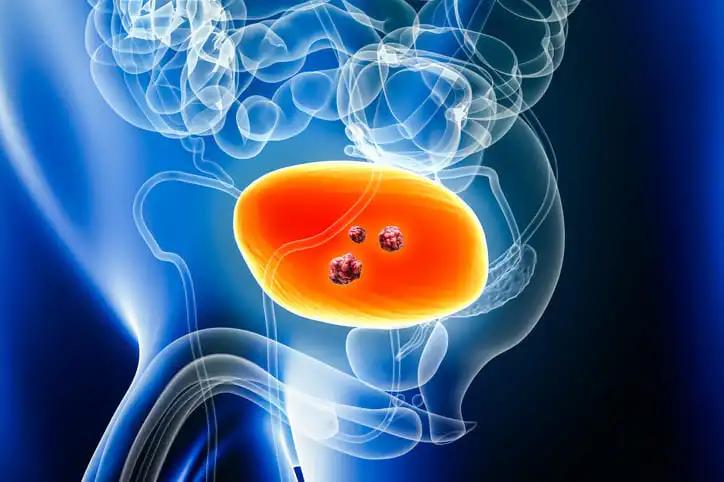KEY TAKEAWAYS
- The phase 3 trial aimed to investigate the long-term efficacy and safety of nadofaragene firadenovec-vncg in patients with BCG-unresponsive NMIBC.
- The primary endpoint was to determine CRR.
- Researchers noticed significant rates of bladder preservation and safety with nadofaragene firadenovec.
Prospective clinical trials to evaluate the long-term durability of bladder-preserving therapies for patients with Bacillus Calmette-Guérin (BCG)-unresponsive non-muscle-invasive bladder cancer (NMIBC) are limited. Nadofaragene firadenovec-vncg (ADSTILADRIN®) is a novel replication-deficient recombinant adenovirus vector-based gene therapy for high-risk BCG-unresponsive NMIBC with carcinoma in situ (CIS) with/without papillary tumors (± Ta/T1).
The phase 3 trial met its primary endpoint as 53.4% (95% confidence interval [CI]: 43.3, 63.3) of patients achieved a complete response by 3 months. Final outcomes from the 60-month follow-up are reported.
Stephen A. Boorjian and the team aimed to assess the long-term durability and safety profile of nadofaragene firadenovec-vncg in patients with BCG-unresponsive NMIBC.
They performed an inclusive analysis in an open-label, multicenter phase 3 trial, enrolling patients with BCG-unresponsive NMIBC in two cohorts: CIS±Ta/T1 (CIS; n=107) and Ta/T1 without CIS (papillary disease [PD]; n=50). Patients received nadofaragene firadenovec intravesically once every 3 months with cystoscopy and cytology efficacy assessments. Mandatory biopsies were taken at 12 months, after which patients entered a 4-year follow-up, and those remaining high-grade recurrence free (HGRF) were offered continued treatment at the investigator’s discretion.
About all treated patients, median follow-up was 50.8 months (interquartile range: 39.1, 60.0) with 26.8% of patients receiving 5 or more instillations and 7.6% of patients receiving treatment for at least 57 months. In the efficacy analysis set, 5.8% of patients with CIS and 14.6% of patients with PD were HGRF at month 57. Kaplan-Meier (KM)-estimated HGRF survival rate at 57 months was 13.2% (95% CI: 6.9, 21.5) and 32.7% (19.5, 46.6) in the CIS and PD cohorts, respectively.
Within 5 years after the first dose of nadofaragene firadenovec, 40.8% and 29.2% of patients in the CIS and PD cohorts underwent radical cystectomy, respectively. KM-estimated overall survival at 60 months was 76.3% (64.6, 84.5) and 85.9% (70.9, 93.5) in the CIS and PD cohorts, respectively. 4 patients with CIS and 1 patient with PD experienced progression to muscle-invasive disease documented by transurethral resection of bladder tumor at the time of high-grade recurrence as collected in the electronic case report form. No new safety signals were identified on long-term follow-up.
The study concluded that nadofaragene firadenovec demonstrated significant bladder preservation rates at 60 months, offering a safe intravesical treatment option for patients with BCG-unresponsive CIS±Ta/T1 and Ta/T1 without CIS.
The trial was funded by Ferring Pharmaceuticals.
Source: https://www.auajournals.org/doi/10.1097/01.JU.0001008712.53259.7d.01
Clinical Trial: https://clinicaltrials.gov/study/NCT02773849
Boorjian S.A., Narayan V.M., Konety B.R., et al. (2024). “EFFICACY OF NADOFARAGENE FIRADENOVEC-VNCG FOR PATIENTS WITH BACILLUS CALMETTE-GUÉRIN-UNRESPONSIVE NON-MUSCLE-INVASIVE BLADDER CANCER: FINAL RESULTS FROM A PHASE 3 TRIAL.” Presented at AUA 2024 (Abstract PD48-01).



